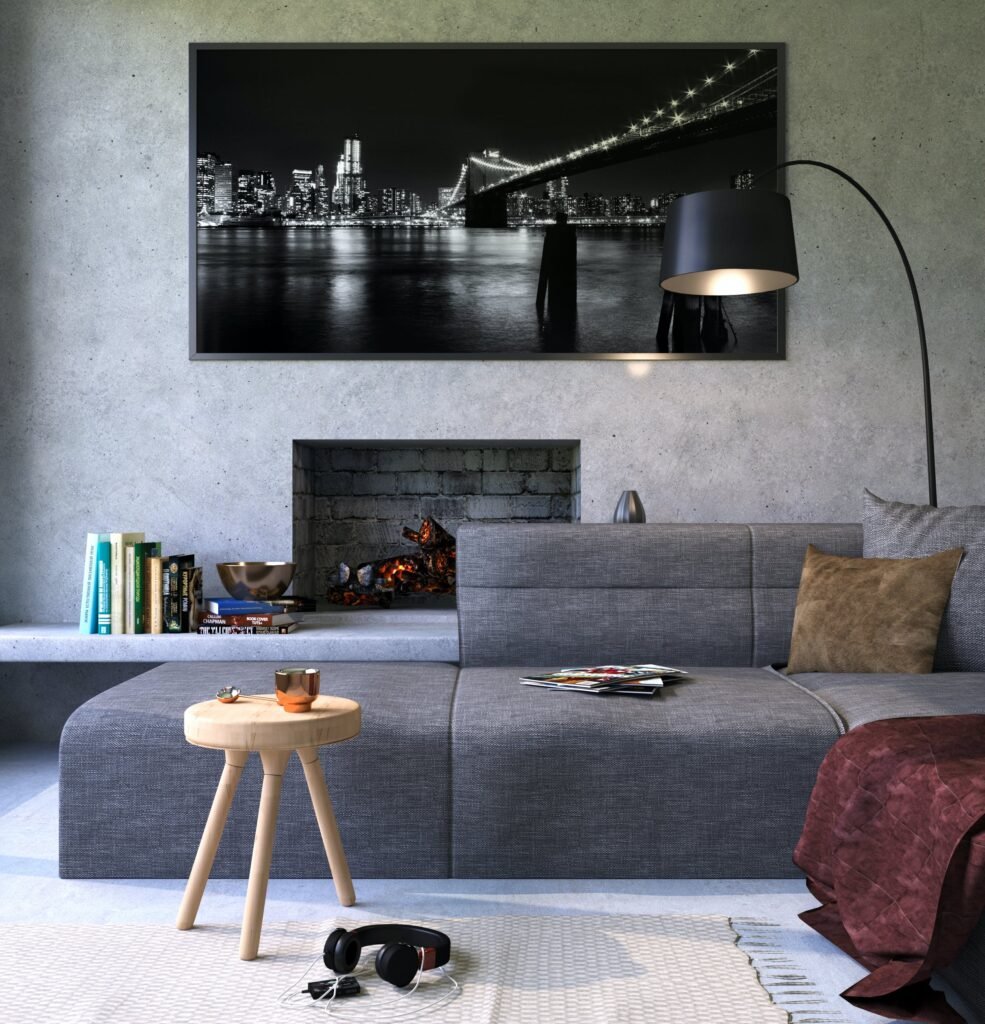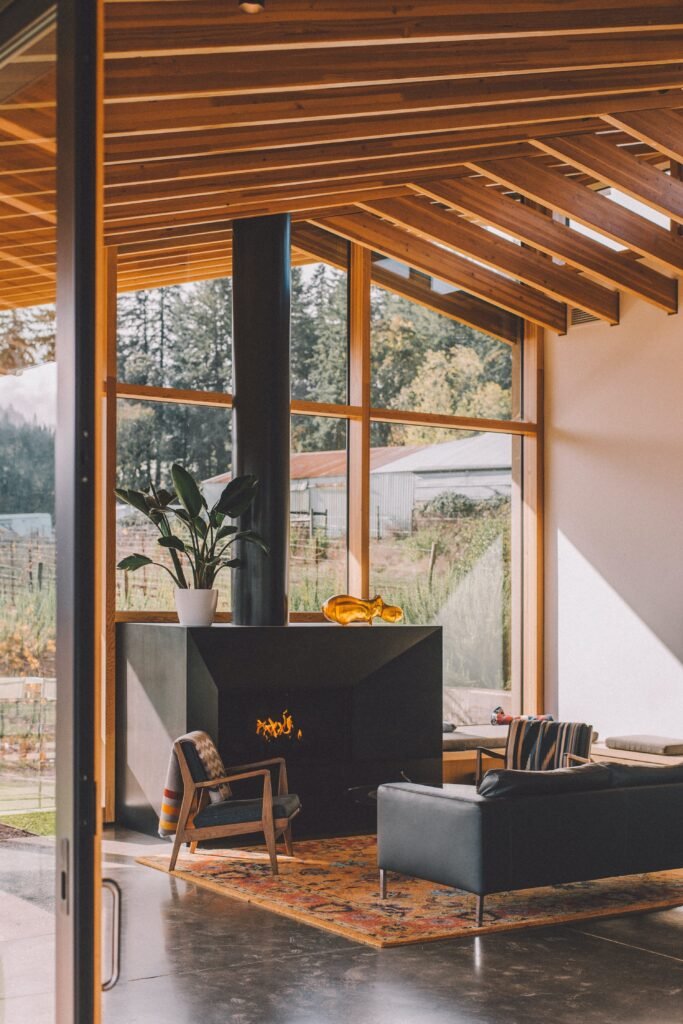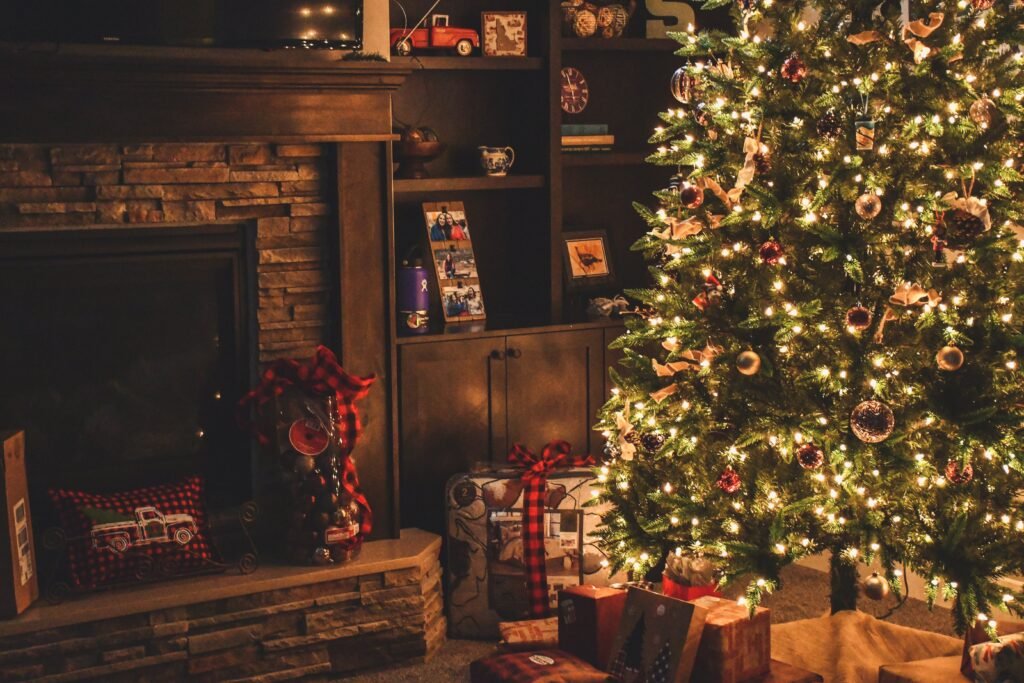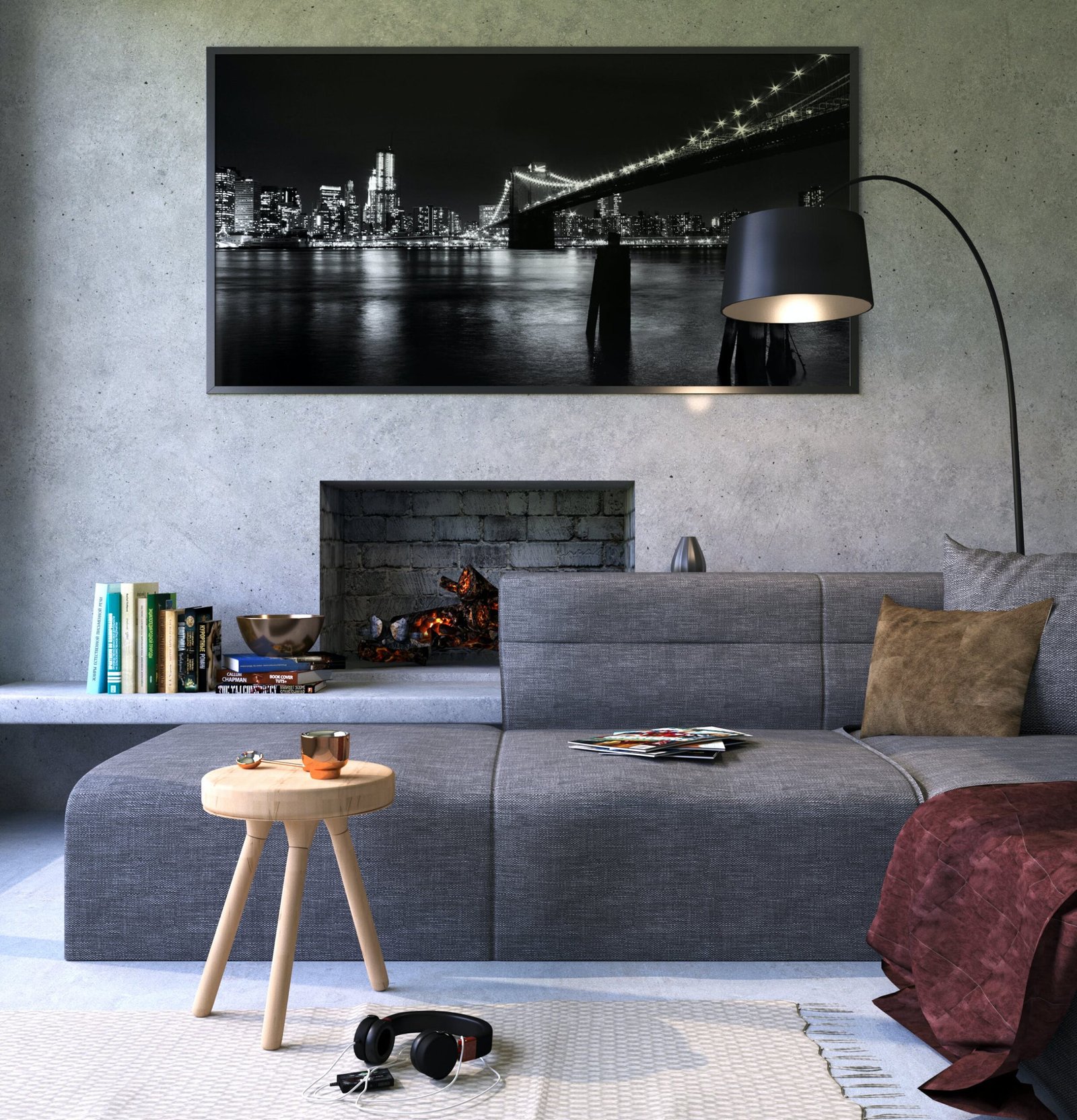When it comes to creating a warm and inviting atmosphere in your home, few things can rival the cozy ambiance of a crackling fireplace. However, in order to keep your fireplace performing at its best, it requires a little TLC. From regular cleaning to annual inspections, taking care of your fireplace not only improves its efficiency but also ensures your safety. In this article, we will explore the steps you can take to give your fireplace the attention it deserves, so you can enjoy the comfort and warmth it provides all season long. So grab a mug of hot cocoa and join us as we delve into the world of fireside TLC.

This image is property of images.pexels.com.
Inspecting Your Fireplace
Check for cracks or damage
Inspecting your fireplace is an essential step in ensuring its safety and functionality. Begin by thoroughly examining the exterior and interior of the fireplace for any cracks or signs of damage. Cracks in the bricks or mortar can indicate structural issues and should be addressed promptly to prevent further deterioration. It is also important to check for any loose bricks or deteriorated mortar joints, as these can pose a safety risk.
Inspect the chimney
Next, turn your attention to the chimney. Take a close look at the chimney stack, checking for any cracks or missing mortar. It is crucial to repair any issues promptly to prevent water infiltration and potential chimney fires. Additionally, make sure that the chimney is straight and free from any visible leaning, as this could indicate structural problems.
Examine the flue
The flue is a critical component of your fireplace as it allows for the safe exit of smoke and gases produced by the fire. Inspect the flue for any obstructions, such as debris or animal nests, which can restrict airflow and create a fire hazard. A clear, unobstructed flue is vital for proper ventilation and efficient performance of your fireplace.
Inspect the damper
The damper controls the airflow in your fireplace and helps to regulate heat output. It is important to inspect the damper to ensure it opens and closes smoothly. If you notice any difficulty in operation or signs of damage, such as rust or corrosion, it may be necessary to repair or replace the damper. A properly functioning damper is essential for both safety and energy efficiency.
Cleaning and Clearing
Clear out ashes and debris
Before starting the cleaning process, it is crucial to clear out any ashes and debris from the firebox. Use a fireplace shovel and metal bucket to carefully scoop out the ashes, ensuring that they are completely extinguished before disposal. Dispose of the ashes in a metal container and store it outside, away from any flammable materials.
Sweep the chimney
Regular chimney sweeping is essential for the proper maintenance of your fireplace. Creosote, a byproduct of burning wood, can accumulate in the flue over time and increase the risk of chimney fires. Hiring a professional chimney sweep to remove the creosote buildup and perform a thorough cleaning is highly recommended. A clean chimney promotes better ventilation and reduces the risk of chimney fires.
Clean the firebox and hearth
The firebox and hearth are prone to soot, ash, and debris buildup. To keep them clean, use a fireplace brush or vacuum with a brush attachment to remove loose debris and ashes. Wipe down the firebox walls and the hearth with a damp cloth to remove any remaining soot or stains. Regular cleaning not only enhances the aesthetic appeal of your fireplace but also prevents the accumulation of flammable materials.
Remove soot and creosote buildup
Soot and creosote can accumulate on the walls of the flue and firebox, posing a fire hazard. Using a chimney cleaning solution specifically designed to break down and remove these substances can help maintain a clean and safe fireplace. Apply the solution according to the manufacturer’s instructions, ensuring to protect yourself with gloves and goggles. After allowing the solution to sit, scrub the surfaces gently with a chimney brush and rinse thoroughly.
Ensuring Proper Ventilation
Assess the airflow
Proper ventilation is crucial for the efficient functioning of your fireplace. To assess the airflow, open the damper and light a small piece of kindling. Observe the direction of the smoke. Ideally, it should rise steadily and exit through the chimney. If you notice smoke entering the room or difficulty in airflow, it may indicate a ventilation problem that needs to be addressed.
Check the vents and screens
Inspect the vents and screens of your fireplace to ensure they are free from dust, debris, or any obstructions. Blocked vents and screens can hinder the flow of fresh air into the fireplace, impacting its efficiency and causing potential smoke backdrafts. Clean the vents and screens regularly using a soft brush or vacuum cleaner to maintain optimal airflow.
Clear any obstructions
Obstructions in the chimney or flue can compromise the function and safety of your fireplace. Check for any foreign objects, such as leaves, animal nests, or debris, which may be obstructing the chimney. These obstructions can prevent proper ventilation and increase the risk of chimney fires. If you encounter any obstructions, it is best to seek professional assistance to safely remove them.
Adjust dampers and vents
Dampers and vents play a vital role in regulating airflow in your fireplace. During colder months, keeping the damper fully open allows for better ventilation and heat distribution. In contrast, partially closing the damper can help retain heat when the fireplace is not in use. Familiarize yourself with the operation of your dampers and vents and adjust them accordingly to optimize the performance and efficiency of your fireplace.
Maintaining the Chimney
Schedule regular chimney cleanings
Regular chimney cleanings by a professional chimney sweep are essential for maintaining the health and performance of your fireplace. It is recommended to have your chimney cleaned at least once a year, or more frequently if you frequently use your fireplace. Professional cleaning not only removes dangerous creosote buildup but also identifies any potential issues, such as cracks or damages, that require repair.
Repair cracks and damages
Cracks and damages in the fireplace and chimney can compromise both safety and efficiency. Monitor your fireplace and chimney for any signs of cracks, loose bricks, or deteriorated mortar. If you notice any issues, it is crucial to address them promptly. Repairing cracks and damages can prevent further deterioration and ensure the longevity of your fireplace.
Replace chimney cap and crown
The chimney cap and crown protect the chimney from water, debris, and animal intrusions. Over time, these components can deteriorate and require replacement. Inspect the chimney cap and crown for any signs of damage, such as cracks or corrosion. If necessary, replace them with new, high-quality materials to maintain the integrity of your chimney.
Install chimney waterproofing
Water infiltration can cause significant damage to the structure of your chimney. Applying a chimney waterproofing sealant can help protect against water damage and extend the lifespan of your chimney. Consult with a professional chimney sweep to determine the appropriate waterproofing product for your specific chimney materials and environment.

This image is property of images.pexels.com.
Choosing the Right Firewood
Opt for seasoned firewood
Choosing the right firewood is crucial for both performance and safety. Opt for seasoned firewood, which has been properly dried for at least six months. Seasoned firewood burns more efficiently, produces less smoke, and generates more heat. It is also essential to store the firewood properly to maintain its seasoning and prevent moisture absorption.
Avoid treated or painted wood
Using treated or painted wood in your fireplace can release toxic fumes when burned. These chemicals can be harmful to both your health and the environment. Avoid using wood that has been pressure-treated or painted, and stick to natural, untreated firewood for a cleaner and safer burn.
Properly store firewood
Proper storage of firewood is vital to preserve its seasoning and protect it from moisture. Ideally, firewood should be stored in a dry, well-ventilated area, such as a shed or woodpile. Make sure the firewood is stacked off the ground and covered to prevent moisture absorption. Additionally, ensure proper airflow between the wood stacks to prevent mold growth.
Consider alternative firewood options
While traditional firewood is a popular choice, exploring alternative firewood options can provide added benefits. Hardwoods like oak and hickory burn longer and produce more heat compared to softwoods like pine. Additionally, you can consider using wood pellets or compressed logs, which burn cleaner and emit fewer pollutants. Research and experiment with different firewood options to find the one that best suits your needs and preferences.
Practicing Safe Fireplace Usage
Always have a fire extinguisher nearby
Safety should be the top priority when using your fireplace. Always keep a fire extinguisher nearby in case of emergencies. Ensure that everyone in your household knows how to operate the fire extinguisher and that it is easily accessible. Regularly check the extinguisher to ensure it is in working condition and have it serviced or replaced as needed.
Use a fireplace screen or glass doors
A fireplace screen or glass doors serve as a protective barrier, preventing sparks, embers, and debris from escaping the fireplace and posing a fire risk. Install a durable fireplace screen or consider adding glass doors for added safety. These safety features not only protect your home but also add a stylish touch to your fireplace.
Never leave the fire unattended
It is crucial never to leave a fire unattended in your fireplace. Even small embers or sparks can quickly ignite nearby flammable materials or cause accidental injuries. Before leaving the room or going to bed, fully extinguish the fire by ensuring all embers are no longer glowing. This simple practice significantly reduces the risk of accidental fires.
Keep flammable materials away
To prevent accidental fires, it is important to keep flammable materials, such as furniture, curtains, and decorations, at a safe distance from the fireplace. Maintain a clear zone of at least three feet around the fireplace and avoid placing any flammable items on the mantel or hearth. Taking these precautions minimizes the risk of accidental ignitions and enhances overall fireplace safety.

This image is property of images.pexels.com.
Improving Fireplace Efficiency
Use a fireplace insert or wood stove
If you are looking to improve the efficiency of your fireplace, consider installing a fireplace insert or wood stove. These appliances are designed to maximize heat output and minimize heat loss. Fireplace inserts fit into your existing fireplace and provide better insulation, while wood stoves are freestanding units that offer efficient heating for larger spaces. Both options can significantly increase the efficiency and performance of your fireplace.
Install a circulating fan
Installing a circulating fan or fireplace blower can help distribute the heat generated by your fireplace more evenly throughout the room. These fans work by pushing the warm air away from the fireplace and dispersing it into the surrounding space. A circulating fan can improve the heat output and efficiency of your fireplace, ensuring maximum comfort during chilly winter days.
Add insulation around the fireplace
To prevent heat loss and increase the efficiency of your fireplace, consider adding insulation around the fireplace walls. Heat-resistant insulation materials, such as rock wool or fiberglass, can be placed between the firebox and the surrounding walls. This insulation helps to retain heat, reduces drafts, and prevents excessive heat transfer to adjacent walls.
Consider a chimney damper
A chimney damper is an excellent addition to improve the efficiency of your fireplace. It helps to seal your chimney when your fireplace is not in use, preventing drafts and cold air from entering your home. Consider installing a top-sealing damper, which provides a better seal and reduces heat loss when compared to traditional throat dampers. Using a damper efficiently prevents heat loss and saves energy.
Enhancing Fireplace Aesthetics
Clean and polish the fireplace facade
A clean and polished fireplace facade can enhance the visual appeal of your living space. Regularly dust and wipe down the fireplace facade to remove any dirt or soot buildup. Depending on the materials of your fireplace, use appropriate cleaners or polishes to restore its shine. Taking the time to maintain a clean facade will help your fireplace become a beautiful focal point in your home.
Update the mantel and surround
Updating the mantel and surround is an effective way to refresh the overall look and feel of your fireplace. Consider adding a new mantel shelf or changing the material of the surround to give your fireplace a modern or traditional touch. This simple update can transform the aesthetic of your fireplace and complement your home’s interior design.
Install new fireplace doors
Replacing old fireplace doors can instantly enhance the appearance of your fireplace while improving safety. Choose doors that complement the style of your home and provide easy access for maintenance and cleaning. New fireplace doors can add a touch of elegance and sophistication to your living space, making your fireplace a true statement piece.
Add decorative elements
To further enhance the aesthetics of your fireplace, consider adding decorative elements to the mantel or hearth. Decorative items such as candles, vases, or artwork can add a personal touch and make your fireplace a focal point in the room. Be mindful of safety by ensuring that the decorative elements are non-flammable and do not obstruct airflow.
Troubleshooting Common Issues
Addressing smoke and odor problems
If your fireplace is producing excessive smoke or emitting unpleasant odors, it may indicate an issue with the ventilation or the quality of the firewood. Ensure that your chimney and flue are clear of any obstructions and that the damper is fully open during use. Additionally, make sure you are using properly seasoned firewood to minimize smoke and odor issues.
Dealing with downdrafts
Downdrafts, which occur when outside air is pushed down the chimney and enters your home, can be bothersome and affect the efficiency of your fireplace. To address this issue, consider installing a chimney cap with a draft-inducing design. These caps create an upward draft, preventing downdrafts and ensuring optimal airflow.
Fixing poor draft
Poor draft in your fireplace can result in a smoky room and decreased performance. Check for any obstructions in the flue, such as debris or creosote buildup, and clean or remove them if necessary. In some cases, a professional chimney sweep may need to inspect and correct the construction or design of the chimney to improve the draft.
Resolving fireplace leaks
If you notice water leaking into your fireplace or surrounding areas, it indicates a potential problem with the chimney or flashing. Inspect the chimney cap, crown, and flashing for any signs of damage or deterioration. Repair or replace any faulty components to prevent water infiltration and protect your fireplace against structural damage.
Hiring Professional Services
Consult with a chimney sweep
When it comes to chimney maintenance and repairs, it is often best to consult with a professional chimney sweep. They have the expertise and specialized equipment to thoroughly inspect the chimney, clean it effectively, and identify any potential issues that require attention. Hiring a professional ensures the safety and longevity of your fireplace.
Seek assistance for repairs
If you come across any cracks, damages, or issues that are beyond your expertise, it is essential to seek professional assistance for repairs. Professionals can assess the severity of the problem and provide suitable solutions to restore your fireplace’s functionality and safety. Attempting to fix complex issues on your own may worsen the situation or pose a safety risk.
Get professional firewood advice
Professional advice on firewood selection and storage can help you make informed decisions for optimal fireplace performance. A professional chimney sweep or supplier can provide guidance on the best types of firewood for your fireplace and offer tips on proper storage techniques to maintain seasoning. Following their recommendations will ensure that you have a safe and efficient fire.
Consider fireplace remodeling
If you are looking to upgrade or transform your fireplace, considering a fireplace remodeling project can help you achieve the desired aesthetics and functionality. Consult with a professional fireplace remodeler to discuss your vision and explore possibilities. They can guide you through the process, recommend suitable materials, and ensure that your fireplace becomes a stunning centerpiece in your home.
Maintaining and caring for your fireplace is essential to achieve peak performance and ensure the safety and comfort of your home. By following these comprehensive steps and seeking professional help when needed, you can give your fireplace the tender loving care it deserves and enjoy cozy fires for years to come.




